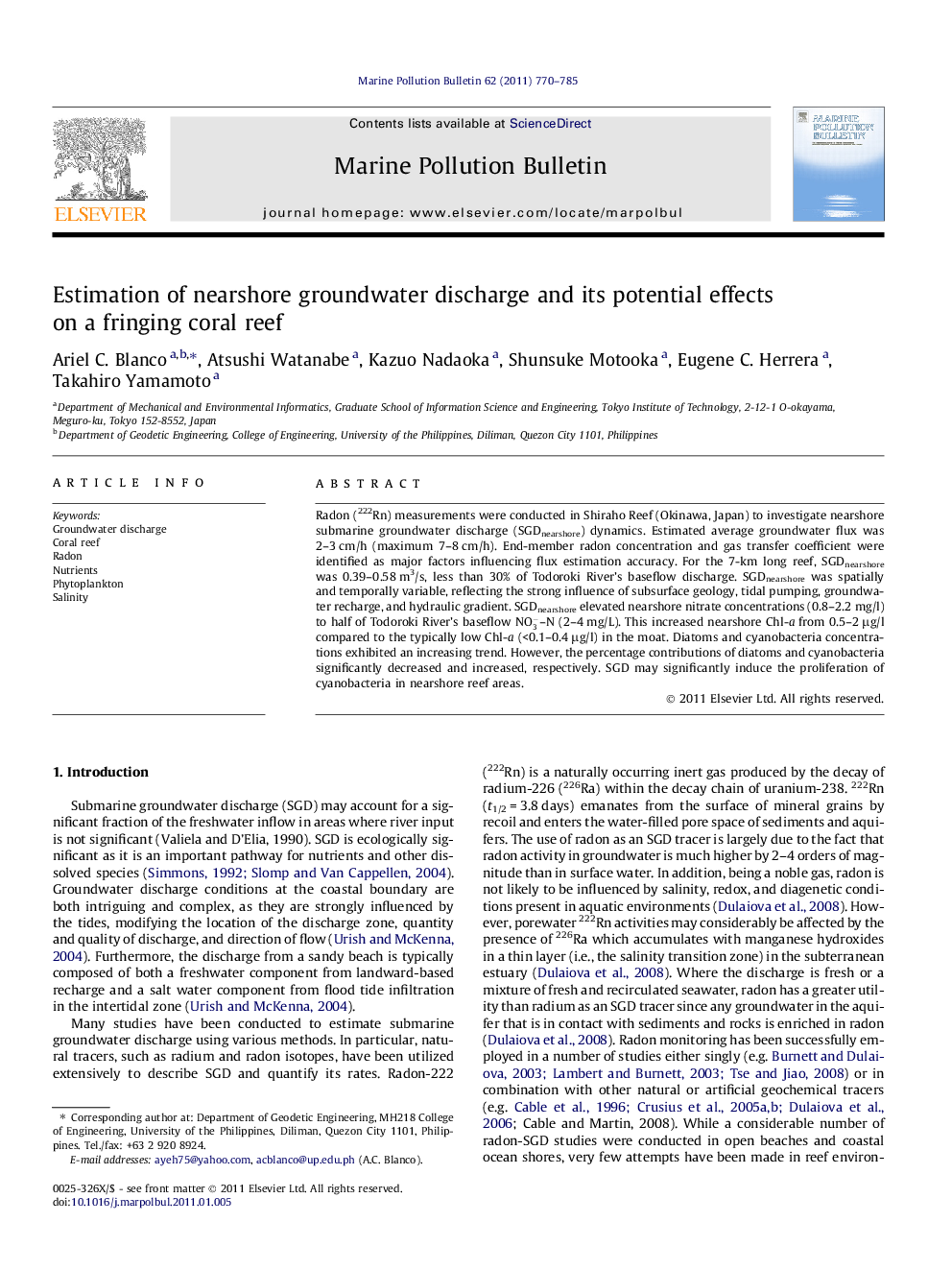| Article ID | Journal | Published Year | Pages | File Type |
|---|---|---|---|---|
| 6362218 | Marine Pollution Bulletin | 2011 | 16 Pages |
Radon (222Rn) measurements were conducted in Shiraho Reef (Okinawa, Japan) to investigate nearshore submarine groundwater discharge (SGDnearshore) dynamics. Estimated average groundwater flux was 2-3 cm/h (maximum 7-8 cm/h). End-member radon concentration and gas transfer coefficient were identified as major factors influencing flux estimation accuracy. For the 7-km long reef, SGDnearshore was 0.39-0.58 m3/s, less than 30% of Todoroki River's baseflow discharge. SGDnearshore was spatially and temporally variable, reflecting the strong influence of subsurface geology, tidal pumping, groundwater recharge, and hydraulic gradient. SGDnearshore elevated nearshore nitrate concentrations (0.8-2.2 mg/l) to half of Todoroki River's baseflow NO3--N (2-4 mg/L). This increased nearshore Chl-a from 0.5-2 μg/l compared to the typically low Chl-a (<0.1-0.4 μg/l) in the moat. Diatoms and cyanobacteria concentrations exhibited an increasing trend. However, the percentage contributions of diatoms and cyanobacteria significantly decreased and increased, respectively. SGD may significantly induce the proliferation of cyanobacteria in nearshore reef areas.
Research highlights⺠We characterized SGD in a fringing coral reef using radon tracing. ⺠End-member Rn and gas transfer rate significantly affect flux estimation accuracy. ⺠Reef SGD is strongly influenced by tidal pumping and hydraulic gradient. ⺠SGD elevated nitrate concentrations, which drastically increased nearshore Chl-a. ⺠SGD significantly induced the proliferation of cyanobacteria in nearshore reef areas.
